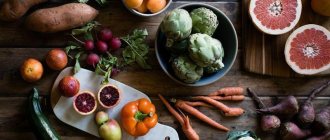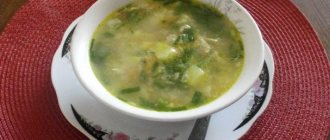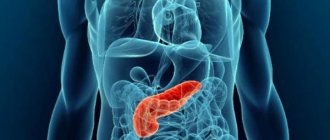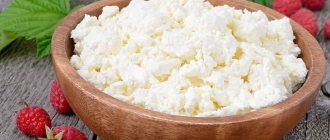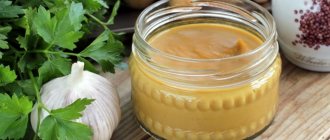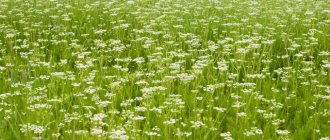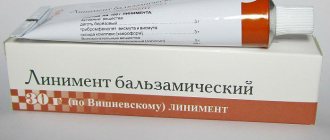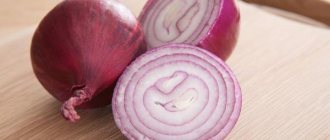For gastric diseases, the patient is prescribed drug therapy, which is carried out in combination with proper nutrition. The diet excludes heavy, fatty, fried and peppered foods. The patient's diet should be dominated by steamed and boiled vegetables, meat, as well as cereals that envelop the gastric mucosa: millet, oatmeal, buckwheat, rice. Cereals contain a large amount of vegetable fats, fiber, proteins and microelements necessary for stomach diseases.
Healthy porridges that envelop the stomach
The benefits of porridge for stomach ailments are due to the following factors:
- there is no need for long chewing;
- does not irritate the mucous membrane of the organ;
- digests quickly and does not overload the stomach;
- Provides the body with healthy carbohydrates, vitamins and vegetable proteins.
Porridge envelops the gastric mucosa and facilitates the course of the disease. Thus, the following cereals should predominate in the patient’s diet: buckwheat, oatmeal, pearl barley, rice, semolina and millet.
Properly prepared porridges can normalize digestion and regulate bowel movements.
Millet porridge is rarely consumed, even despite its usefulness. It has the ability to control the metabolic process, contains vitamin D and a large amount of vitamins B, A, PP. Natural fiber and varieties of starch and amino acids make millet porridge necessary for diseases of the intestines and stomach.
Buckwheat has a huge amount of essential amino acids, their number reaches eighteen. This protein dietary product is indicated for diseases of the gastrointestinal tract. Buckwheat is used to prepare side dishes; at the acute stage, it is boiled and ground. At the remission stage, it is allowed to include buckwheat in meatballs and stuff vegetables with it, and eat it as a separate side dish with a piece of butter.
For diabetes
Oatmeal decoctions and infusions are used in complex phytotherapy for type 1 and type 2 diabetes mellitus as a means of correcting carbohydrate and lipid metabolism. Of course, the use of such drugs will not eliminate taking medications, especially in the case of decompensation of diabetes or the development of complications, but it can significantly improve well-being.
Decoction. Pour 2 cups of oat grains into a liter of water, boil for 15 minutes, leave for 45 minutes, strain and take half a cup 3 times a day. This enveloping decoction is also useful for fever as an antipyretic, for inflammation of the stomach, intestines, liver, pancreas, for edema due to cardiovascular failure, hepatitis, cirrhosis of the liver, stones in the liver and gall bladder.
What are the benefits of oatmeal?
Oatmeal, unlike millet groats, is the most popular dish. Its benefits are due to phosphorus, calcium, magnesium, choline, zinc and a large number of other useful components that make up the cereal. The tightening properties of oatmeal can create a protective film on the walls of the stomach, which prevents the impact of negative factors on the organ.
Oatmeal is cooked in water to a boiled consistency and rubbed through a strainer or whipped with a blender. At the stage of remission of the disease, you can prepare oatmeal with whole milk, adding butter to the dish. Oatmeal is prescribed to the patient from the first days of treatment, as it is able to restore the body's defenses. When the patient's condition improves, he is allowed to add fruit to the oatmeal.
To strengthen the body
Oatmeal is a hearty food that gives you strength and vigor for a long time. Our ancestors were well aware of these properties of oats. According to legend, the prince and founder of Belgorod Vladimir left the city and went to fight the Pechenegs. The enemies found out that the governor was absent and besieged the Belgorod fortress. Soon the townspeople ran out of food supplies - and famine began in the city. Then Vladimir called the Pechenegs into his tent, who wanted to force the Belgorod residents to surrender, and assured the enemy leader that there would be enough food in the fortress for ten years, after which he gave the Pechenegs milk jelly with oats to drink. After tasting the hearty drink, the Pechenegs decided that the inhabitants of the fortress were definitely not in danger of starvation, and lifted the siege.
Milk drink. Pour 1 cup of oatmeal with 5 cups of water and cook until the volume is reduced by half. Strain, add an equal amount of milk to the resulting liquid, bring to a boil again, sweeten with honey to taste and boil again.
With pineapple, persimmon and meringue. 10 spectacular oatmeal recipes Read more
Rice
Diseases associated with the stomach and other organs of the digestive system occur in most cases after excessive consumption of harmful foods. Accordingly, treatment mainly consists of proper nutrition. The patient is prescribed various types of cereals, including rice. The cereal contains eight amino acids, 8 percent protein and does not contain gluten, which contributes to an allergic reaction.
For stomach diseases, rice is used to cook porridge and prepare decoctions that have a strengthening and cleansing effect. In addition, rice is added to meat souffles, fish cutlets and meatballs. Cooked rice in water does not increase gastric secretion; it is allowed both at the stage of remission and during exacerbation of the disease. For the dietary menu, it is better to choose polished white rice, which is boiled and does not irritate the damaged mucous layers of the organ walls.
For constipation
Oatmeal and oatmeal contain dietary fiber necessary for good digestion and regular bowel movements. Oats have a pronounced detoxifying effect, which is important when taking medications, liver diseases, skin diseases, and cancer.
To make the effect more noticeable, it is better to prepare oat kvass.
Kvass . Pour water over whole oat grains and soak for 2 hours. Then the water needs to be drained. Dissolve 1 tablespoon of sugar in 1 liter of warm water and pour the “syrup” over the oats. Leave for 4 days, then drain the liquid, add 2 tablespoons of honey, slightly diluted with water, 2 tablespoons of soaked raisins to the oats and add 1 liter of water to the jar so that it does not reach the neck. Leave the kvass in a warm place for 2-3 days. Take 1 glass 1-2 times a day.
Pearl barley
Pearl barley has high nutritional value and is therefore used for stomach diseases. Barley contains amino acids, vitamins A, B, E, PP, phosphorus, manganese, copper, iron and other trace elements, fiber and protein.
A decoction is made from pearl barley, which has a softening effect. Barley porridge is cooked in water until completely boiled, after which it is ground or crushed in a blender. However, pearl barley has contraindications; it is not recommended for use in cases of high acidity of the stomach and in patients with a tendency to constipation and painful gas formation.
What products are best used to prepare slimy porridges and soups?
For example, your inflammatory process in the gastrointestinal tract has worsened or diarrhea begins. You definitely need to cook rice and oatmeal broth in water. In general, rice is considered one of the main foods that is good for the stomach. And oatmeal works well due to its fiber and its enveloping properties.
What is diet No. 1 according to Pevzner
Dietary table number 1 was created by the Soviet nutritionist M.I. Pevzner and has been practiced for several decades. Diet 1 is considered strict, but it is the one that supports the proper functioning of the gastrointestinal tract and helps to recover in the safest way during periods of various diseases.
shutterstock.com
Such a diet, with adequate nutrition, reduces chemical, mechanical and thermal effects on the gastrointestinal tract, reduces internal inflammation, accelerates the healing of ulcers and normalizes stomach functions. A person eats, maintaining the BJU ratio, but limits the impact of pathogens and irritants on internal organs. Food is consumed mashed, boiled in water or steamed; dishes are prepared without breading or crust.
shutterstock.com
Each patient, without exception, is prescribed a diet by a gastroenterologist. This is due to the fact that the treatment program is divided into several “tables”: 1, 1a, 1b. Only a doctor determines what type of nutrition a sick person needs.
For beautiful skin
Oatmeal masks nourish the skin, relieve inflammation, eliminate oily shine and blackheads and improve complexion. Often oatmeal is crushed and delicate scrubs are prepared from it. You can also make homemade soap using oatmeal.
Mask for oily skin. Pour 3 tablespoons of oatmeal with kefir so that you get a mixture as thick as sour cream. Apply the mask to your face for 20 minutes.
Mask for dry skin. Add one egg yolk and 1 teaspoon of olive oil to the prepared liquid oatmeal. Apply the mixture to your face for 20 minutes.
Scrub for all skin types. Grind 1 tablespoon of oatmeal in a blender, add 1 tablespoon of milk and a drop of olive oil. Apply the mixture to your face with massage movements and then rinse.
Article on the topic
How do oatmeal and coffee help fight cellulite?
Homemade facial soap. To prepare it, you will need 100 g of soap (preferably for children, without dyes or fragrances) and soap base, 1 teaspoon of milk powder, 2-3 tablespoons of ground oatmeal and 1/3 teaspoon of almond oil or wheat germ oil. Melt the soap base - you can do this by heating the soap on the stove or in the microwave. To make the soap melt faster, you need to grind it or grate it. Add milk to the soap and stir well until the mixture resembles sour cream. After this, add ground oatmeal, milk powder and butter. Stir again with a mixer and pour the mixture into soap molds, sprinkle with whole oat flakes. Let it harden. To make the process go faster, you can put the molds in the refrigerator. It is also better to keep the finished soap in the refrigerator.
For thick hair
Oatmeal contains many B vitamins, which are responsible for the thickness and shine of hair. In addition, you can make a natural shampoo from oatmeal, because oatmeal perfectly absorbs sebum accumulated on the surface of the hair and cleanses it of dirt.
Mask. Mix oatmeal with kefir in equal proportions, add a spoonful of honey, 2 yolks and apply to hair for half an hour under a thick cap.
Shampoo. Grind the oatmeal in a coffee grinder, dilute with water to form a liquid paste. Apply the “porridge” to your hair, massage well and rinse with water slightly acidified with vinegar or lemon juice. If your hair is very dry, you can add egg yolk to the shampoo.
To wash or not to wash?
With a few exceptions, do not wash. Exception No. 1 - authentic varieties of rice for pilaf such as devzira, laser, alanya, etc. Exception No. 2 is rice for sushi, where it is required by technology. Exception No. 3 – millet and quinoa, we will explain why below. The rest of the cereals that you buy in packages at the store have already been washed five times for you. Previously, it was necessary not only to wash the cereals, but also to sort them out from all sorts of foreign objects such as pebbles and unrefined grains. This practically never happens anymore, there is no need to waste time. In addition, you will probably wash the cereal with tap water, and it contains impurities that have a bad effect on the aroma of the final product - for example, bleach. So if you still need to wash some cereals, use bottled or filtered water.
If you still need to wash some cereals, use bottled or filtered water
Other General Principles
With the extremely rare exception of cereals:
- cook in boiling water, and it is easier to salt it in advance (if you salt the water after the cereal is poured in, you need to mix everything very thoroughly);
- cook over medium heat so that the cereal gradually and evenly absorbs water;
- cook under the lid, and the pan should be at least one and a half times larger than the combined volume of cereal and water - so that there is enough space for the formation of steam; in a small saucepan the cereal will “run away”;
- they should (more precisely, it would be good for them) to brew after the end of cooking, also under the lid - this allows the steam to finish its work, and the cereal to become more tasty.
Porridges that should not be eaten often
Along with healthy ones, there are so-called “harmful” cereals, the consumption of which brings nothing to the body except extra calories.
Nutritionists give first place to the popular semolina porridge. It is a product of wheat processing, but most of its composition is starch. It causes allergic reactions, contains a lot of calories, and inhibits intestinal function. Almost the entire volume of semolina porridge eaten turns into fat, so it can be consumed extremely rarely.
The second most harmful is rice porridge, made from white polished rice with the addition of milk. If such a rice kulesh is generously sprinkled with sugar, then after digestion only extra calories will remain in the body.
Experts also advise refraining from eating instant oatmeal. The bulk of the beneficial components of oats are contained in the shell. There is no grain fiber inside a bag of instant porridge, but there is a lot of sugar, flavoring and food additives.
When you decide to cook healthy porridge, choose cereals that you like to taste and contain many microelements. According to nutritionists, regular consumption of cereals preserves the health of the digestive system, stomach, and intestines for a long time, gives vigor and vitality.
Millet
The main trick in millet is one: a thin film covering every grain. This film adheres tightly to the grain, but at the same time it is very bitter. And if you don’t wash it, the whole porridge will taste bitter. So before cooking, pour the millet into a large container and start rinsing it with cold water, rubbing the grains with your hands. Then you drain the water (it’s cloudy), fill it with new water - and grind it again, and drain it again. And so on until the flowing water becomes completely transparent. Now you can pour the washed millet into boiling salted water. The traditional ratio is 1:1.5 (for 1 volume of millet 1.5 volumes of water). But it’s very good to cook millet using the same folding method: pour the grain into a large saucepan containing about 1:10 water, and throw the cooked grain onto a sieve, let the water drain and return the grain to the saucepan. And it’s better to immediately season with oil or add vegetables/meat or sauce. Without all this, millet tends to stick tightly together.
Millet
Millet porridges have not been very popular lately; for some reason, everyone only thinks about millet and pumpkin, although there are a lot of options for wonderful combinations. For example, crumbly millet with finely chopped smoked chicken, or with baked sweet peppers and garlic, or simply with fried onions.
Whole grains (spelt, oats, wheat)
These cereals are minimally processed, which means they are the healthiest – and they are the ones you should eat most often. Stops cooking time: Whole grains take a long time to cook, at least 40 minutes and sometimes more than an hour. How to deal with this problem? There are three ways:
- fry the cereal before boiling it - exactly as described in the story about pearl barley;
- soak the cereal in advance, 2–8 hours in water at room temperature, then the cooking time is proportionally reduced several times;
- Cook the cereal in a pressure cooker - usually 20 minutes is enough.
Another option - an intermediate one - pour freshly boiled water over the cereal and leave it in a very tightly closed container, for example, a multicooker or, even better, a thermos for several hours. Then there is a high probability that it will not need to be cooked at all before serving. Well, or not for long at all.
Spelled
Whole grain porridge is a serious, very filling meal. If you want a healthy diet, eat them with vegetables - fresh or baked. Although, of course, it’s also very tasty with meat or meat gravy.
Diet table 1: products
Acceptable foods and dishes can be divided into the following groups:
- Soups: slimy consistency, you can add semolina, oatmeal, pearl barley or rice, cream or butter;
- Cereals: liquid slimy porridges made from semolina, pureed buckwheat, rice or oatmeal. You can also add cream or milk;
- Meat and fish: lean veal, beef, chicken and turkey, without skin, fat, fascia and tendons. To prepare it, you need to boil it, pass it through a grater or meat grinder, and use it as a puree or soufflé;
shutterstock.com
- Eggs: soft-boiled or steamed omelet, no more than three eggs per day;
- Fruits and berries: sweet fruits, boiled or baked; compotes, rosehip decoction;
- Dairy products: milk, cream, steam soufflé from freshly prepared pureed cottage cheese.
- Drinks: weak tea with milk or cream, weak cocoa or coffee with milk;
- Additionally: jelly, sweet fruit jelly, milk jelly, honey.
- Excluded: vegetables, herbs, sweets and flour.
Dishes are prepared in unsalted butter or refined vegetable oil. Other types of oils are excluded.
shutterstock.com
The history of the appearance of oatmeal in nutrition
Oats are an annual plant native to Mongolia and northeastern China.
Entire fields of heat-loving spelt were grown there, and wild oats began to infest her crops. But they didn’t try to fight it, because they immediately noticed its excellent feeding properties. Gradually, oats moved north and replaced more heat-loving crops. He is very unpretentious, and in Rus' they said about him: “oats will grow through bast shoes.” Oatmeal was crushed, flattened, ground into oatmeal and eaten in this form by many peoples. Oatmeal porridge, jelly, thick soups and oat cakes are especially common in Scotland, Scandinavia, Latvia, among Russians and Belarusians.
Delicious rice porridge on water with pumpkin
Rice porridge is not only a very tasty dish, but also an incredibly healthy one, which is suitable for proper and nutritious nutrition for both adults and children. Low-calorie porridge with pumpkin is ideal for a hearty breakfast without excess fat and carbohydrates.
Cooking time – 30 minutes.
Cooking time – 5 minutes.
Servings – 2.
Ingredients:
- Rice – ½ tbsp.
- Pumpkin (peeled) – 100 gr.
- Granulated sugar – 1 tsp.
- Salt – ¼ tsp.
- Butter – 20 gr.
Cooking process:
1. Carefully sort the grains and rinse them several times under running water, then transfer them to a fireproof container and fill them with one glass of ice water.
2. Place a thick-bottomed saucepan or saucepan on the stove, add some salt to the water and bring to a boil over maximum heat. Afterwards, reduce the heat to low and cook for about 15-20 minutes.
3. When there is very little water left in the container and the rice has swelled, add pumpkin cubes and simmer until the bright vegetable is ready.
4. 5-7 minutes before removing from heat, add granulated sugar, but stir only after 3 minutes, allowing the cubes to soak up the sweetness.
5. Cook for a few more minutes with the lid half-closed.
6. Before serving, add a small piece of butter to the porridge and enjoy. Bon appetit!
Report a bug
Dishes from “yesterday’s porridge”
Any porridge left over from yesterday can be used the next day in completely different dishes: pancakes, pancakes, krupeniki, vegetarian (or not) cutlets and meatballs.
In meat cutlets and meatballs, cereal can act as an additive in the role of bread. And in vegetarian ones - as a base to which you can add vegetables, say, finely chopped and fried onions and carrots, grated zucchini/zucchini, pumpkin, stewed cabbage... For some types of cereals: millet, starchy rice, green buckwheat - you don’t even need an egg , you can only crush a little starch. Well, and all kinds of spices: cumin, curry, coriander, hops-suneli, paprika - or whatever the recipe requires. Arborio rice is used to make a classic Italian dish - arancini meatballs, often stuffed with cheese, rolled in breadcrumbs and deep-fried until beautifully golden brown.
Porridge pancakes are usually made with yeast, and they can easily be lean (vegan), without milk and eggs - viscous porridge with the addition of flour holds its shape perfectly in a frying pan. The most popular cereal plini are millet, although you can use rice and oats. It is better to make pancakes from buckwheat and different types of wheat with the addition of eggs, flour and baking powder - so that they are richer. You can use ready-made cereals to add satiety to vegetable pancakes - for example, zucchini or carrot.
Crumbly grains - not just rice - can be fried in a wok or large frying pan along with finely chopped vegetables (regular or green onions, garlic, ginger, carrots, stalked celery, cubes of zucchini, eggplant, sweet peppers), and add raw eggs towards the end . You can beat them a little or crack them directly into the hot grits and stir vigorously, keeping the pan over high heat to set the eggs. Or you can use leftover baked meat/poultry or bacon rather than eggs.
Grechaniki are made from boiled buckwheat (they are also grechniks or even sinners) - they mix it with flour and sometimes eggs and fry it in oil or bake it, and then cut it. With sinners, instead of bread, it is very tasty to eat cabbage soup or borscht.
Well, and various kinds of cereals - a mixture of yesterday's porridge with cottage cheese, beaten eggs, sugar or honey, dried fruits or apples and pears (or unsweetened, with herbs and grated hard cheese) - an excellent breakfast or dinner. It is best to bake this mixture in a rectangular cake pan, greased with butter and sprinkled with breadcrumbs at a not very high temperature - 160–170 °C, for 30–40 minutes. Eating krupeniki tastes better lukewarm or completely cooled.
Casserole from yesterday's porridge
Crispy rice porridge with water in a slow cooker
The most delicious, aromatic and crumbly porridges are obtained when cooked in a slow cooker, and today we present to your attention a recipe for creamy rice porridge with water. This dish is ideal for a family breakfast and will relieve you of hunger for a long time.
Cooking time – 40 minutes.
Cooking time – 10 minutes.
Servings – 8.
Ingredients:
- Rice – 480 ml.
- Water – 960 ml.
- Salt - to taste.
- Butter - to taste.
Cooking process:
1. You can use absolutely any rice to prepare this porridge - it will still work out.
2. The proportions of the ingredients are indicated based on their measurement in multi-glasses - 180 ml. And speaking of cereal, we need 3 cups - measure it out.
3. Thoroughly rinse the grains 3-4 times under running water, getting rid of all specks and starch.
4. Pour the washed rice into the multicooker bowl, fill it with water and add a small piece of butter to enhance the taste. Cook in the “Porridge” mode for about 30-35 minutes.
5. Serve the finished dish hot to the table, first sprinkled with your favorite spices. Bon appetit!
Report a bug
Pearl barley
It makes the cheapest, but the most nutritious and very healthy porridge. Many people underestimate its benefits; most people associate pearl barley with the army or kindergarten. They give it there for a reason. In ancient times, pearl barley porridge formed the basis of the diet of warriors. It quickly saturates the body, gives strength and endurance.
- Since pearl barley is a product of barley processing, it is high in protein and fiber. It stimulates peristalsis, improving the process of food digestion;
- Pearl barley is rich in phosphorus, which is necessary for active brain function;
- Potassium helps the proper functioning of the heart and blood vessels.
Nowadays, pearl barley porridge has significantly lost its popularity. This is due to the long preparation of pearl barley dishes. To cook delicious pearl barley porridge, use a little trick: soak the barley overnight before cooking. This way it will cook much faster.


